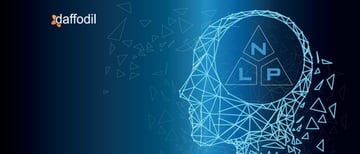
Rolling out a new software system, infrastructure, or technology solution for an industry such as healthcare or personal finance has critical end-user outcomes. Technology Readiness Levels (TRL) refers to a robust scale often used by pioneering software organizations throughout their development efforts.
So a reliable assessment framework is necessary to measure the maturity levels of a software product across its development workflow all the way until deployment. In this article, we will explore how TRLs satisfy this need for the software development industry.
What Are Technology Readiness Levels?A globally recognized scale for describing where new technology is in the research and development process is known as the 'Technology Readiness Level' or TRL. The TRL scale was created by NASA, and the agency still employs it to oversee challenging projects like the creation of rovers for Mars missions. |
The TRL scale ranges from 1 to 9, with 9 being considered commercially ready. Investors, as well as public and private enterprises, use TRL benchmarking to guide decision-making.
What Are TRLs Leveraged For?
The steps between an inventor's initial "aha!" moment and the product's commercialization are described by the TRL scale. It's a quick method to set everyone up for success and control expectations. TRLs are now utilized by businesses like BP, John Deere, and GoogleX as well as international government organizations to evaluate inventions before they are commercialized after continuous integration and deployment of the software.
The TRL scale has been taken into account by individuals in a variety of positions, including technology inventors, grant program reviewers, and early-stage investors. Although small American businesses that purchased technology from the Department of Defense (DoD) were the original users of this scale, it is now widely used across various organizational tiers.
The TRL scale was created by NASA in the 1970s to monitor the stage of development of each new component before incorporating it into a space-bound system. The classification of space system hardware served as the foundation for this international standard.
TRLs are being more widely used in the commercial sector, particularly in fields with low-risk tolerance like infrastructure, oil & gas, and defense. TRLs are frequently mapped to an organization's conventional technology development process, or stage gate, with minimal TRLs permissible at specific gates.
What Are The 9 TRLs?
The 9 stages or phases of maturity of technologies and software as described by the TRLs are as follows:
Level 1: Foundational Observation And Reporting
This is technology preparedness at its starting point. It involves beginning to translate scientific findings into practical research and development (R&D). Paper analytics of a technology's fundamental characteristics are some examples. Supporting data provides references to who, where, and when as well as published research that outlines the underlying concepts of the main technology.
Level 2: Initial Technological Application
Practical applications can be created after the observation of fundamental concepts. Applications are hypothetical, and there might not be any evidence or thorough investigation to back up the presumptions. Analytical studies are the only examples provided. Publications or other sources that describe the application under consideration and offer analysis to back up the notion constitute supporting information.
Level 3: Proof Of Concept Formulation
At this point, the analytical predictions of various technological components are carried out. This comprises analytical investigations and laboratory experiments. Examples include parts that are not yet represented or integrated. Results of laboratory experiments to measure relevant parameters and comparisons to analytical forecasts for essential subsystems are examples of supporting data of Proof Of Concept (POC).
Level 4: Experiment-Based Validations
The integration of fundamental technological elements establishes their compatibility at this stage. Compared to the final system, this is considered to be of poor fidelity. Integration of ad hoc hardware in the lab is one example. Supporting information includes results from testing a laboratory scale breadboard and system designs that have been taken into consideration.
Level 5: Introducing The Relevant Application Environment
So that they can be tested in a simulated environment, the fundamental technological components are combined with supporting factors that are quite realistic. Examples include the high-fidelity integration of components in laboratories. Results from a breadboard testing system are merged with other supporting elements in a simulated operational environment as supporting information.
Level 6: Prototype In The Relevant Environment
A representative model or prototype system that is evaluated in an environment that is relevant is one that goes considerably beyond TRL 5. represents a significant improvement in a technology's proven readiness. Examples include testing a prototype in an operational environment simulation or a high-fidelity laboratory setting. Results from a prototype system's laboratory testing that is close to the planned configuration in terms of performance, weight, and volume serve as supporting data.
Level 7: System Prototype Demo
This stage occurs when the prototyping is close to or at the intended operational capability. It requires the actual system prototype to be demonstrated in an operational setting, marking a significant advancement from TRL 6. Results from testing a prototype system in an operating setting are included as supporting data.
Level 8: System Qualified Through Testing
The technology has been demonstrated to function in its complete form and in anticipated circumstances at TRL 8. This TRL signifies the completion of real system development in the vast majority of cases. Examples include developing the system and testing it in its intended weapon system to see if it fits design requirements. Results of testing the system in its final configuration under the anticipated range of environmental conditions under which it would be expected to operate are included in the supporting documents.
Level 9: Actual System Proven In Operational Implementation
At the final level, the real-world use of the technology in its finished form and under mission-specific circumstances like those found in Operational Testing and Evaluation (OT&E) is observed. Examples include applying the concept to real-world mission scenarios. Reports from OT&E are included as supporting data.
ALSO READ: Magical CRUD and Performance Levels
TRLs Are Valuable Tools For Assessing Software Maturity
TRLs and other standardized metrics are useful tools for communicating about and evaluating the state of technology development activities. In addition to TRLs, software developers should also establish integration conditions and pursue feedback at the initial stages and also regularly through later stages. If you are looking for a technology partner that can develop pioneering software solutions in a cost-effective and timely manner, refer to Daffodil's Software Development Services.



